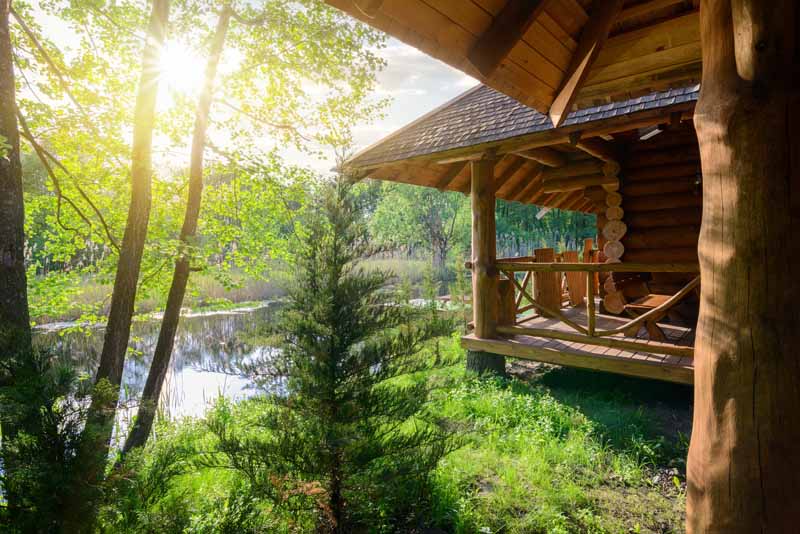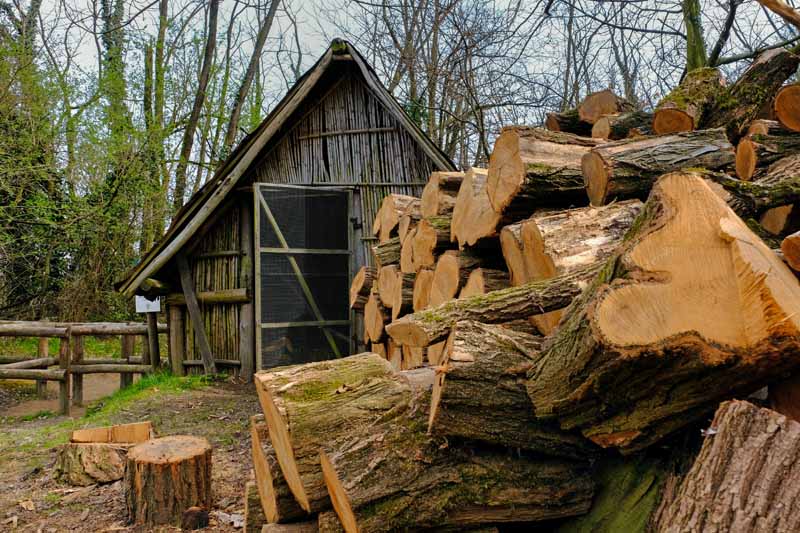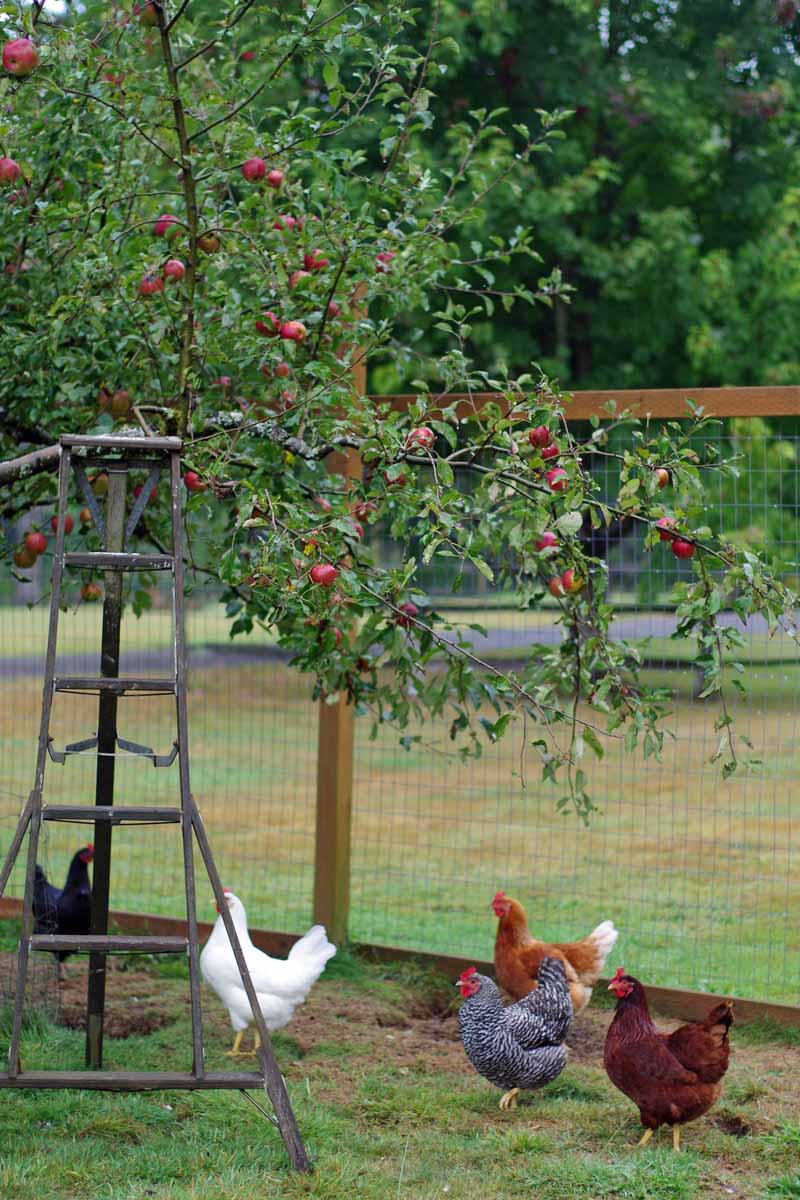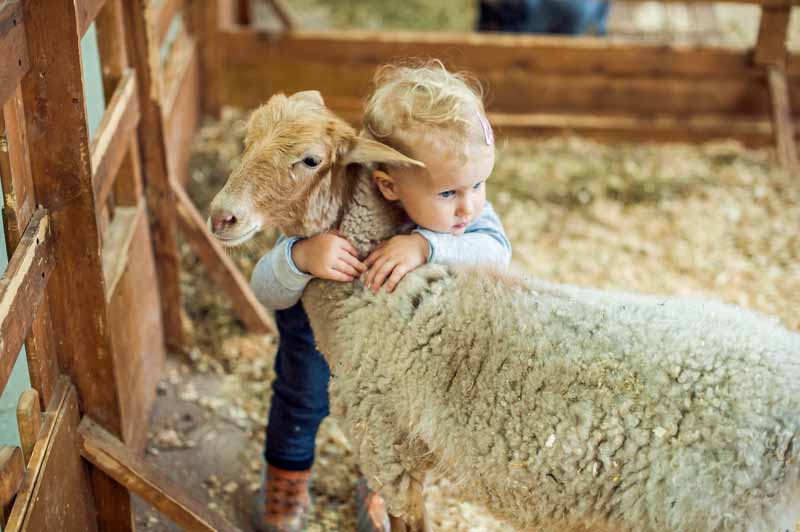About the Author
Country living appeals to many who yearn for a simpler life, but in fact, it’s hard work. Author Carla Emery was no stranger to this fact, having spent her childhood on a Montana sheep ranch and her adult years on an Idaho farm. With over 2,000 recipes and 1,500 recommended resources for living off the land, do-it-yourself projects ranging from making jam at your kitchen counter to keeping sheep on a country acre are at your disposal with this in-depth guide to the country life. Emery got the notion to write a book in 1970, a year after receiving a gift subscription to Organic Gardening magazine. What began as a recipe collection, sold in mimeographed installments via an ad in the back of that magazine, would blossom into road trips, fairs, TV appearances, and a life that was anything but country-like or simple. For over 30 years, Emery tweaked her “Original Manual for Living Off the Land and Doing it Yourself,” seeing it through ten editions, before her passing in 2005. Her practical guide is as relevant today as it was during the 1970s back-to-the-land movement, and the Y2K Millennium grid-failure scare.
A Wealth of Wit and Wisdom
The Encyclopedia of Country Living measures 8.4 x 1.6 x 11 inches and weighs 3.5 pounds. This hefty paperback volume has a black-and-white color scheme. It contains diagrams, illustrative sketches, tables, lists, and some photos of Emery and family in a user-friendly format.
I got my first impression of the book over 20 years ago, and it was love at first read. Emery’s conversational style and inspirational anecdotes are so warm and friendly, I was hooked immediately. And, while I’ve never ventured off the grid myself, I find her manual to be an excellent source of recipes, information on growing herbs and vegetables, and ideas for kids’ school and scouting projects. Four brief sections appear at the beginning of the book. They are: Acknowledgments, What This Book Is, Who This Book is For, and About the Time Traveling in This Book. Each describes an aspect of the text, with apologies for the charmingly disjointed collection of material gathered at different points in the author’s life. Next are 12 main chapters packed with detailed information. Each has its own table of contents. Here are the highlights:
Oddments
A variety of advice that doesn’t fit neatly into the other 11 categories is included here, with everything from how to deliver your own baby to “A 10-Step Plan to Straighten Out Your Finances.” With references to land ownership as a “spiritual responsibility,” and one’s obligation to stewardship as an avocation, we get a firm grasp of Emery’s scope and mission.
An Introduction to Plants
Emery considers the state of the environment regarding pollution and climate change, and offers recipes for crafting “harmless cleaning agents and other eco-safe formulas.” Here you’ll find in-depth information on topics like crop planting, hydroponics, botanical names, mushrooms and sprouts, organic gardening, seed saving, and soil and worms. Abundant online resources of further information and recipes are included, as are intimate glimpses into the author’s life.
Grasses, Grains & Canes
Amaranth, bamboo, barley, buckwheat, corn, oats, quinoa, rye, sorghum, spelt, sugar cane, wheat, and even wild rice are food for thought in this extensive review; there’s even a section on growing broomcorn to make your own brooms. Practical skills like planting, harvesting, binding, shocking, threshing, winnowing, and grinding are described. Recipes include griddle cakes, pasta, pretzels, scones, steamed and boiled breads, and Carla’s Turkey Stuffing.
Garden Vegetables
This is the largest section in the book, at approximately 125 pages. Emery’s “dual organizational system” lists veggies by either their botanical family or the edible part of the plant. The botanical families included are alliums, brassicas, cucurbits (gourds), legumes, and nightshades, and the plant parts described are leaves, stems, flower seeds, and roots. For example, lettuce is found under leaves, asparagus under stems, and scallions under alliums. In addition, there is an index at the end of the book you may also use to locate a desired vegetable quickly. Topics here include planting, harvesting, seed saving, blanching, canning, drying, freezing, and winter storage. I especially like the extensive section on beans, and the ones on crafting gourds and making pickles. Lots of exciting projects to try here! At the end of the chapter, the reader is treated to an intimate conversation with Emery about the birth of her sixth child, born the day after she updated the pepper portion of the encyclopedia.
Herbs & Flavorings
In the introduction to this chapter, Emery describes herbs as “a pleasant luxury, a comfort so natural to country living that I’m including them in this book (p. 377)”. She places them in eight categories: culinary, stronger seasoning, decorative, scented, medicinal, natural pesticides, and those that thrive in containers. In addition to information on growing, purchasing, harvesting, and preserving, there’s an A to Z listing of individual herbs. A fun section called “Products and Processes” has instructions for making homemade items such as hand lotion, oils, pomanders, and sachets. Additional topics include cocoa/coffee/tea, recipes for making toiletries like toothpaste and moisturizers, and safe foraging for food in the wild.
Tree, Vine, Bush, & Bramble
Following an introduction touting the wonders of trees is a little section titled “Guerilla Tree Planting,” in which Emery encourages the sowing of seeds or seedlings wherever and whenever possible, like little random acts of kindness for the planet. From tree planting basics to pruning techniques, maple sugaring to nut harvesting, apple preservation to pressing olives, this is a broad section chock-full of techniques and recipes. It concludes with everything you ever wanted to know about how to heat with wood, from planting, harvesting, and burning to the use of cookstoves.
But my favorite part is Emery’s story at the end of this section about her “foolish little almond tree (pp. 508-509),” with references to the challenges of time spent on the road to sell copies of her book.
Food Preservation
Emery opens this chapter with witty recipes for “How to Preserve a Husband” and “Preserved Children.” She goes on to discuss surviving crises by being “self-sufficient” and “foodwise,” and gives readers a fill-in-the-blank survey on “Food Self-Sufficiency” and menu-planning advice. Food preservation methods such as canning, drying, and freezing are discussed, as well as how to design a root cellar. Fruit preservation is a section unto itself with recipes for homemade goodies like chutney, ice cream, jelly, and taffy. And lastly, “Preserving with Vinegar, Salt, and Fat” includes recipes for old-time shrub and switchel. At the end of this section, we get another glimpse into the life of Emery and her wife/mother/writer juggling act.
Introduction to Animals
Here you’ll find a complete guide to raising livestock and trapping in the wild to put meat on the table. Topics of interest include selecting animals at auction, building barns and fences, buying/growing feed, training animals to walk on a lead, and home veterinary practices. There’s also a section on butchering and one on trapping food in the wild. An extensive collection of meat recipes includes homemade mincemeat, salami, and sausage. Next, the “by-products” are considered in sections about tanning and soapmaking, and a section called “Food from Water” introduces the idea of farming fish. This chapter concludes with memories of Emery’s half-Shetland pony, Shorty Bill, a stormy night, and the comfort of trust.
Poultry
If you’ve ever dreamed of a chicken coop in the backyard and fresh eggs in the morning, this chapter’s for you.
Here you’ll find instructions for raising not only chickens, but turkeys, ducks, geese, guinea fowl, game birds, pigeons, and doves. From hatching in homemade brooders to nursing through common ailments, butchering to recipe preparation, you’ll find everything you need in this section. Emery even explains how to clean and use the feathers, because nothing goes to waste with the best practices for country living!
Goats, Cows & Home Dairying
An opening disclaimer from Emery acknowledges that there is a lot of information out there about raising milk animals that is beyond the scope of the book. Her hope is that folks will use that she provides as a starting point, with its descriptions of practical skills and references to pertinent resources online. She goes on to say that cows exhibit more emotion than goats, and that it’s helpful to “… learn to yield a little to a milk cow’s preferences… (p. 748).” Dairy animals are the perfect country life asset. Emery says, “Any dairy animal is a miracle of efficiency. Grass, vegetables, grain, water, and salt go in one end. Milk, baby animals (meat), and manure to build up your garden soil come out from various other locations. There is no waste (p. 750).” Topics include buying and raising goats, cattle, and oxen; butchering; milking; types of milk; and making butter, cheese, and ice cream. And Emery’s personal story continues, with references to child number seven.
Bee, Rabbit, Sheep & Pig
The essentials of beekeeping and honey harvesting open the final chapter. Then it’s on to crafting rabbit runs, the “Secrets of Rabbit Feeding,” veterinary care at home, and butchering. And if sheep are your passion, you’ll appreciate the detailed information provided on breed selection, care and feeding, wool shearing, butchering, preserving, and cooking.
The chapter concludes with pigs, “… the most civilized barnyard animal there is… (p. 862).” From setting up housing and fencing to feeding, breeding, butchering, and barbecue, you’ll find what you need to bring pigs to your country life. Recipes for honey, rabbit, sheep, and pig are included throughout.
Appendix
The appendix to the book is devoted to an interesting topic – how to use antique cookbooks in modern times. Headings include: Leavening, Temperature, Measures, Flour, Sugar, Flavoring, and Mystery Words. A “Dictionary of Antique Cookbook Words” follows. Deciphering phrases like “boiled until it will spin (p. 891),” a stage of syrup at which droplets adhere by threads, enables us to understand and adapt the recipes of our elders for today’s table. Six fun and useful closing sections follow the main chapters. First are a “Chronology of This Book,” and “Various Editions Described,” which contain journal-type entries by Emery noting key events in the years between the book’s inception and its tenth edition. Then there’s a list of “World Records This Book May Have Set” that includes Emery’s amazement at delivering three babies and a book during four and a half years. In fact, this collection did set records, including over 750,000 copies sold, and the 1975 Guinness Book of World Records claimed it to be the “Largest Mimeographed Volume in General Circulation.” Two fun quizzes for readers follow, and then the book ends with an alphabetical index and full-page photo of a smiling Carla Emery on the farm with her husband and dogs.
A State of Mind
What makes this manual stand out from others is that between the lines of practical information is the spirit of an author firmly rooted in faith, who is devoted to her family, her work, and the social and environmental issues of her time. Its wealth of wisdom is the culmination of over 30 years of collecting and preserving the best practices for living off the land. And for those of us who reside in less than bucolic settings, country living has become a way of thinking. From rustic decor to home-baked pies, we often aspire to a simpler life, where good smells from the kitchen and time for friendly conversation make a happy home. Tap into the homesteading side of yourself with The Encyclopedia of Country Living and let your imagination take you as far off the beaten path as you like. Book cover image courtesy of Sasquatch Books. Uncredited photos: Shutterstock.






